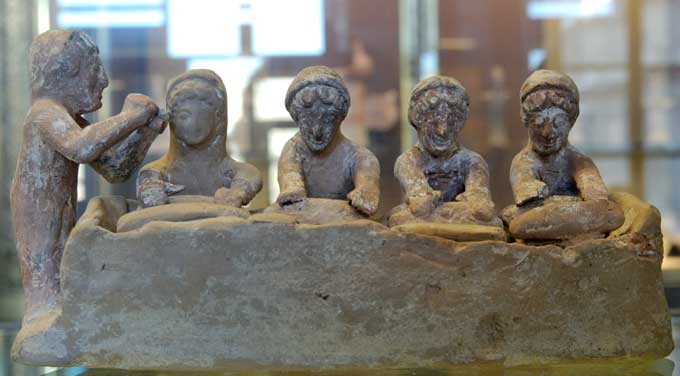Dedicated to those who believe that the Ancients did not know the existence of wheat.
The following excerpt from Wiki shows that these non believers know diddly squat.

Cultivation of wheat began to spread beyond the Fertile Crescent after about 8000 BCE. Jared Diamond traces the spread of cultivated emmer wheat starting in the Fertile Crescent sometime before 8800 BCE. Archaeological analysis of wild emmer indicates that it was first cultivated in the southern Levant, with finds dating back as far as 9600 BCE.[16][17] Genetic analysis of wild einkorn wheat suggests that it was first grown in the Karacadag Mountains in southeastern Turkey. Dated archeological remains of einkorn wheat in settlement sites near this region, including those at Abu Hureyra in Syria, suggest the domestication of einkorn near the Karacadag Mountain Range.[18] With the anomalous exception of two grains from Iraq ed-Dubb, the earliest carbon-14 date for einkorn wheat remains at Abu Hureyra is 7800 to 7500 years BCE.[19]
Remains of harvested emmer from several sites near the Karacadag Range have been dated to between 8600 (at Cayonu) and 8400 BCE (Abu Hureyra), that is, in the Neolithic period. With the exception of Iraq ed-Dubb, the earliest carbon-14 dated remains of domesticated emmer wheat were found in the earliest levels of Tell Aswad, in the Damascus basin, near Mount Hermon in Syria. These remains were dated by Willem van Zeist and his assistant Johanna Bakker-Heeres to 8800 BCE. They also concluded that the settlers of Tell Aswad did not develop this form of emmer themselves, but brought the domesticated grains with them from an as yet unidentified location elsewhere.[20]
The cultivation of emmer reached Greece, Cyprus and India by 6500 BCE, Egypt shortly after 6000 BCE, and Germany and Spain by 5000 BCE.[21]
"The early Egyptians were developers of bread and the use of the oven and developed baking into one of the first large-scale food production industries.
" [22] By 3000 BCE, wheat had reached the British Isles and Scandinavia. A millennium later it reached China.
This photo by Marie-Lan Nguyen shows a clay figurine in the museum of Thebes: Women kneed bread. Doesn't the bread look suspiciously risen? (In case you thought that the Ancients did not know about yeast in bread).
Of course this is not the only source of information about the use of wheat and yeast in Ancient lands.
My friend, just open ANY book ANY website and you shall see a wondrous world of bread making from wheat AND yeast in the ancient world.


No comments:
Post a Comment